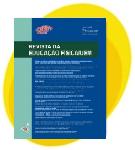<b>Evaluation of competitive behavior tendency in judo athletes: an analysis between genders</b> - DOI: 10.4025/reveducfis.v20i4.6353
Keywords:
Genders, Judo, Competitiveness.
Abstract
The central objective was to compare the competitiveness between male and female judo players. The Instrument ACS - 2 was applied in 52 Men and 45 Women athletes, providing data in three-dimensional level of Competitive Trends - Competing, Winning and Establish Goals. Age, Time of Practice and Performance Level were also analyzed. Spearman correlation was applied in intergroup assessment between qualitative and quantitative variables, Wilcoxon to the intergroups analysis of qualitative variables and t Test for quantitative. Despite the high rates found for the Competitive Trends, they showed no intragroup correlation with quantitative characteristics; however intergroups results showed significant differences for all variables least for the Age, indicating similar ages between genders. These observations allow one to conclude that the independent variable (Gender) influence the dependent variable (Competitiveness), revealing that male judo practitioners build a higher competitive perspective than female, and that it can interfere in high competitive levels.Downloads
Download data is not yet available.
Metrics
Metrics Loading ...
Published
2009-12-23
How to Cite
1.
Serassuelo Junior H, Oliveira SR de S, Simoes AC. <b>Evaluation of competitive behavior tendency in judo athletes: an analysis between genders</b> - DOI: 10.4025/reveducfis.v20i4.6353. JPhysEduc (Maringá) [Internet]. 2009Dec.23 [cited 2025Dec.25];20(4):519-28. Available from: https://periodicos.uem.br/ojs/index.php/RevEducFis/article/view/6353
Issue
Section
Original Articles
• Authors retain the copyright and full publishing rights without restrictions.

This work is licensed under a Creative Commons Attribution 4.0 International License.









_1502.jpg)











